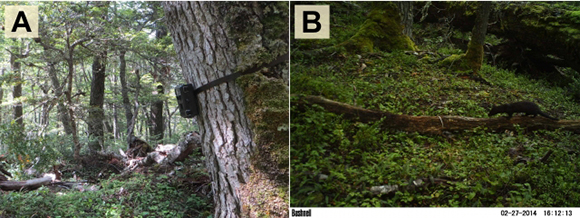Ramiro Crego
Doctoral student in Biological Sciences at University of North Texas
My study focuses on invasive species in Navarino Island, which belongs to the Magellanic Sub-Antarctic ecoregion and Cape Horn Biosphere Reserve in Southern Chile. Invasive species are a major global problem in conservation ecology. Even remote places, such as the Cape Horn at the southern end of the Americas, one of the last pristine regions of the World, are under threat. In the past 70 years twelve mammal species were introduced in this region. Three were introduced by the fur industry, and are considered the most invasive and harmful: the American beaver (Castor canadensis), the muskrat (Ondatra zibethica), and the American mink (Neovison vison). These species, native to North America and Canada that naturally interact in their native range, are now creating an assemblage that have a large impact on the structure and functioning of the Magellanic Sub-Antarctic ecosystems. In particular, the American mink arrived to Navarino Island in the late 90s. Mink have no competitors or natural enemies on the island, establishing themselves as a new top predator in this fragile ecosystem, where most prey species are naive to predation.
I am addressing several questions: How does the invasive American mink adapt to a pristine-island ecosystem? Which habitats are mink using and how that changes along the year? How do prey species adapt to the new predator? What is the impact that American mink predation has on native rodent and bird species? How do the three non-indigenous mammal species (American beavers, muskrats, and American mink) interact among themselves to amplify their impacts on biodiversity?

This essential information is crucial to develop management strategies to control or even eradicate this invasive species on Navarino Island and eventually from the CHBR, ensuring protection for the local biodiversity.
At this point on my research, I have completed around 75% of the field work and data collection, I can summarize three major outcomes.
First, my study showed that American mink on Navarino Island shows a high occupancy (number of surveyed sites with mink present) during the summer, occupying forested areas away from the shoreline or even streams. Occupancy dropped during the winter, with animals concentrating more closely to the shoreline during the spring. These data suggest that currently, given that most of the controlling trapping activities occur during the summer, when mink are more active with juveniles dispersing, most of the animals that are being removed, likely will not survive winter famine. To have a substantial impact on the population, reproductive adults should be removed. Therefore, trapping during the summer will not be effective in controlling the population if several animals remain inland and would subsequently recolonize the "empty" territories. Instead, allocating trapping efforts at the end of the winter and beginning of the spring when mink are occupying mostly shrubby coastal areas, reproductive adults are more likely to be eliminated from the population. In this way, conservation agencies would have a higher impact controlling mink population, and should avoid wasting resources on trapping animals that likely will not survive the winter. I am currently working with Chile's Agricultural and Livestock Bureau officers to develop an intensive trapping control during September and October of 2015.

The second most important outcome is related with the interaction among the American mink, the beaver, and the muskrat. The interaction between invasive species is known in science as the "Invasive meltdown theory". I found that beavers create suitable habitat for muskrats, which at the time, represent almost 50% of the diet of mink that live inland. Ultimately, beavers may be playing a key role in the invasive system. Moreover, the idea of invasional meltdown arose in invasion ecology in the 2000s. Even though much research has been done to support this hypothesis, most studies come from two-species interactions, with only a few including mammal species. My results are showing a three-level interaction among three mammal species: American beaver, muskrat, and American mink. This is a novelty. I will present a talk on this subject at the Annual Meeting of the Ecological Society of America this coming August.
The third most important outcome is related to education. During the course of my project, I was able to support, thanks to two mayor grants I obtained, four undergraduate and graduate students that received intensive training in field and lab techniques, as well as, on quantitative techniques that currently drive the field of ecology and conservation. The first of these students conducted his university practice, a prerequisite for his Bachelor of Biology degree at the Pontificia Universidad Católica de Chile, and is now starting a Master of Science program at the same university. Another of the students was accepted at the Master of Science program at the University of Florida, USA, planning to continue working with American mink ecology in Chile. The other two technicians were encouraged to continue working in conservation programs in their own regions. I feel that with this project I was able to transmit some of the knowledge and conservation spirit I gained years ago when I was a technician myself. I believe that cultivating and continuing the initiative to conserve biodiversity was one of the most important outcomes of my project.